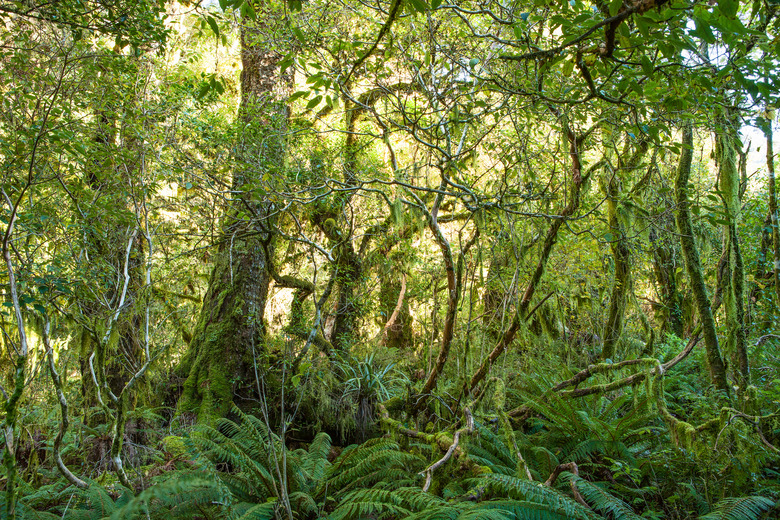How Is A Biome Formed?
A biome is a major ecological community that is defined by the broad characteristics of climate and vegetation. Different systems exist for biome classification, with between five and 20 types of biomes occurring on Earth depending on which system is used.
At the simplest level, biomes can be described as grassland, forest, desert, tundra and aquatic. However, many sub-categories exist, and each biome can contain many distinct ecosystems. Biomes can be greatly affected by changes in climate, land use and significant geological events.
Forest Biomes
Forest Biomes
Forest biomes are those that have a vegetation structure dominated by tree species. Forests can be found all over the world, from boreal forests of conifers found in northern latitudes, deciduous forests found in temperate regions and tropical forests near the Equator. Tropical forests are often split into wet tropical forests, which receive regular rainfall throughout the year, and dry tropical forests, which have dry seasons of several months each the year.
Grassland Biomes
Grassland Biomes
Grassland biomes are characterized by the dominance of grass species in the vegetation. Like forests, grasslands can vary greatly depending on the local and regional climate. Tropical savannah grasslands are found in Africa, Central and South America and in northern Australia, and are characterized by dry seasons and frequent fires, which help prevent the area from becoming forest.
Tropical savannah grassland also contains tree and shrub species such as acacias. Temperate grasslands include the prairies of North America and the steppes of Central Asia. These grasslands can range from tall, lush grasses up to six feet tall to high-altitude systems where grasses grow no higher than ankle height. Temperate grasslands generally lack significant amounts of trees and shrubs, in contrast with more tropical areas.
Desert Biomes
Desert Biomes
Desert biomes exist where precipitation levels are too low to allow the growth of grassland and forest. Although deserts are usually considered to be hot and arid, such as the Sahara of Africa or the Atacama of Chile, the polar regions are also considered deserts as water does not exist in a liquid state that is available to plants. Despite the challenging conditions, many species of plants grow in deserts and have a variety of mechanisms to cope with the limited availability of water.
Tundra Biomes
Tundra Biomes
Tundra biomes are found in the near-polar regions of North America, Europe and Asia, and also at high altitudes in other areas of the world. They are characterized by a very short growing period each year and the presence of a permafrost layer in the subsoil, which remains frozen throughout the year. As a result, trees are unable to establish and the vegetation is dominated by low shrubs, mosses and lichens.
Aquatic Biomes
Aquatic Biomes
Aquatic biomes are often divided into freshwater ecosystems and marine ecosystems. However, these can be further categorized depending on their characteristics. Freshwater systems can include still bodies of water such as lakes and ponds, moving water in streams and rivers, or wetlands, which are waterlogged soils that are inundated by water permanently or seasonally. Marine biomes can include coral reefs, estuaries, seashores, open waters or shallow coastal waters.
Changes to Biomes
Changes to Biomes
Biomes are susceptible to shifts in climate and land use, with these impacts causing dramatic changes to the structure and composition of vegetation within the biome. Changes in climate, whether natural or human-induced, can cause forests to become grassland savannahs, or grasslands to turn into deserts.
Land use can also cause these changes, with frequent, human-caused fires removing forest cover in favor of grassland, and over-grazing causing savanna to degrade into desert. These changes can have significant impacts on the ecology and productivity of a region and the people, animals and plants that live there.
The Process of Succession
The Process of Succession
Biomes represent the climax state of the environment and vegetation. If an area is disturbed through human activity, fire or other disruptive processes, the local ecology will go through several stages of development in a process called succession.
In a forest biome, disturbed areas will first be colonized by 'pioneer' plant species that specialize in those conditions. These will then create conditions suitable for the growth of grasses and shrubs, followed by trees which will then grow into mature forest. However, if disturbance happens on a regular basis, it can create changes in the environment that cause the process of succession to plateau in a lower state of biodiversity and productivity.
Cite This Article
MLA
Michelle, Meg. "How Is A Biome Formed?" sciencing.com, https://www.sciencing.com/biome-formed-8733409/. 30 September 2021.
APA
Michelle, Meg. (2021, September 30). How Is A Biome Formed?. sciencing.com. Retrieved from https://www.sciencing.com/biome-formed-8733409/
Chicago
Michelle, Meg. How Is A Biome Formed? last modified March 24, 2022. https://www.sciencing.com/biome-formed-8733409/
